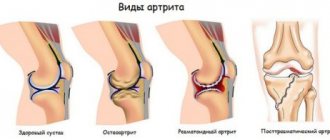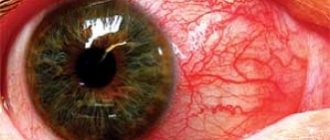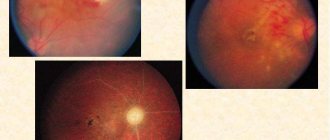When a joint is damaged by pathogenic microorganisms, a pathology such as infectious arthritis develops. The deviation is characterized by an inflammatory process in the cavity of the affected joint. The spread of pathogenic organisms provokes dysfunction of the entire body by reducing protective functions. Untimely treatment of an infectious disease can lead to a number of complications.
Causes of the disease
The main root cause of infectious arthritis is considered to be the penetration of a pathogen into the body, which can be contracted through injury and contact with a sick person. In response to an irritant, an inflammatory reaction occurs in the joint. Often the disease is accompanied by the accumulation of purulent exudate. In this case, septic arthritis develops, which may be accompanied by sepsis.
The addition of a bacterial infection provokes inflammation.
There are a number of factors that cause inflammation in the joint cavity:
- bacterial damage (streptococcus, staphylococcus, gonococcus);
- viral pathologies (HIV, hepatitis, rubella);
- parasitic infection;
- fungi;
- wounds and injuries with damage to the skin;
- associated diseases (pneumonia, tonsillitis, cystitis, tuberculosis, gonorrhea, syphilis).
Also, the risk of developing an infectious form of arthritis increases in people suffering from obesity and diabetes. Tumor neoplasms, anemia and vitamin deficiency also contribute to the pathological condition. People suffering from alcohol and drug addiction are at risk.
Infectious arthritis in children is mainly caused by staphylococci and hemolytic streptococci, which is characterized by an acute onset and severe course of the disease.
Infectious-allergic arthritis
This form of infectious arthritis is associated with a special immune response to certain pathogens. Usually joint damage appears a week after infection; pathogenic microbes in this case are allergens, which is why the disease is called infectious-allergic arthritis. The most common allergens are staphylococci and streptococci, which initially provoke a respiratory disease.
The symptoms of infectious and infectious-allergic arthritis differ. With infectious arthritis, the disease passes into an acute stage, the joints hurt severely, and the temperature rises. The infectious-allergic form is characterized by a milder course; patients complain of aching pain and itching in the affected area. With this pathology, one joint or several at once can be affected, then the disease is called polyarthritis.
The vague symptoms are due to the fact that the disease does not occur immediately after infection. As a rule, by the time the joint is damaged, a person is already taking anti-inflammatory drugs for a previously identified pathology, which successfully suppress the inflammatory process, but do not relieve the allergic reaction.
For infectious-allergic arthritis, treatment is the same as for infectious arthritis, but with some adjustments. Typically, patients continue to take anti-inflammatory drugs and antibiotics, and if there are signs of an allergic reaction, the doctor prescribes antihistamines.
Types of pathology
Pathogenic microorganisms enter the joint through the bloodstream.
Primary and secondary arthritis are divided. The first occurs when the pathogen directly penetrates the joint cavity. The second variant of joint inflammation develops against the background of infection of nearby soft tissues. The pathology is also classified according to the nature of the root cause, which provoked the inflammatory reaction in the diseased joint.
Fungal subspecies
Fungal infections rarely affect osteochondral tissue. Inflammation of the articular joint is secondary in nature when pathogens spread from a nearby bone lesion or when the entire body is infected. Fungal arthritis is treatable. With timely initiation of therapy, it goes away completely. In advanced cases, fungal arthritis becomes chronic.
Parasitic subspecies
More often, parasitic arthritis occurs against the background of diseases such as taeniasis, filariasis and dracunculiasis. Inflammation is caused by both the parasites themselves and their eggs. The danger is that the carrier of the parasites is contagious and, if household and hygienic rules are not followed, can provoke the spread of the pathogen. Mainly small joints are affected, which is accompanied by a rash on the skin.
Bacterial subspecies
Staphylococcus aureus provokes the development of bacterial arthritis.
The bacteria that cause the pathological condition penetrate into the joint cavity when the concomitant disease is active. Most often, young children and older people suffer from bacterial arthritis. In children, the root cause of pathology is Staphylococcal aureus. Streptococcal arthritis occurs in older people.
Bacteria that infect the joint penetrate into its cavity through the bloodstream. Often the reason for the development of arthritic lesions lies in the aggressiveness of genitourinary pathology or sexually transmitted diseases. In this case, focal lesions are noted in the joints of the hands, elbow, ankle, and also in the knee joint.
Staphylococcal subspecies
The presence of infections provokes a purulent process that destroys the structure of the joint. Staphylococcal arthritis is accompanied by rapid destruction of cartilage tissue. Symptoms of the pathology are pronounced and begin acutely. An aggressive infection destroys both the body of the joint and its synovium. The pathogen enters the joint through the lymphatic and blood flow, as well as due to the development of osteomyelitis.
Viral subspecies
A viral infection destroys the body's protective function.
Infectious joint damage that accompanies viral arthritis occurs against the background of the underlying disease. The first symptoms are observed 4-5 days after the pathogen enters the body. Initially, viral arthritis affects the joints of the upper extremities, especially the hands and fingers. The destructive pathology also extends to the joints of the lower extremities, which leads to severe pain when walking. Inflammation of the articular joints is observed against the background of the following ailments:
- chlamydia;
- hepatitis;
- rubella;
- pneumonia.
Rheumatoid subspecies
A pathology such as infectious arthritis can provoke dysfunction of the immune system. The development of an autoimmune reaction leads to the formation of a rheumatoid form of the disease. Rheumatoid arthritis often causes inflammation of multiple joints. The pathology is rarely completely cured, which becomes a cause of disability. It can provoke a number of complications, which include infectious arthrosis and osteoarthritis.
Jet subspecies
Post-infectious arthritis occurs as a reaction to pathogenic bodies that penetrate the joint cavity during infectious pathologies of the gastrointestinal tract and genitourinary system. It enters the joint through the bloodstream. Reactive arthritis appears several months after the development of the underlying disease. It most often affects the joints of the lower extremities.
Classification and causes
The word “arthritis” translated from Latin means “ache in the joints.” This name combines several types of inflammatory diseases with predominant damage to bone joints.
Arthritis should not be confused with arthrosis. The latter refers to degenerative-dystrophic joint changes.
Arthritis can be:
- post-traumatic;
- rheumatoid;
- allergic;
- rheumatic (one of the manifestations of rheumatism);
- reactive (post-infectious), etc.
Polyarthritis of the hands
A disease that affects one joint is classified as monoarthritis, two or three joints - oligoarthritis, several joints - polyarthritis.
Every third case of the disease is associated with one or another infection. Arthritis with infectious etiology in the International Classification of Diseases (ICD-10) is in the group of infectious arthropathy (codes M00-M03).
Arthritis can occur in acute and chronic forms.
Inflammation of the joints can be primary, when the infection enters from the outside directly into the joint tissue, and secondary, when it is brought from nearby tissues or distant foci of inflammation along with blood or lymph.
Infectious arthritis can develop in all age categories (in newborns, children, adults) regardless of gender.
Arthritis of infectious origin most often affects the large joints of the lower extremities (hip, knee, ankle), as well as the wrist joints.
In terms of etiology, infectious arthritis can be:
- bacterial;
- viral;
- fungal;
- parasitic.
When divided according to nosological principle, they distinguish between septic arthritis (pyogenic, purulent), brucellosis, gonorrheal, etc.
The development of bacterial arthritis in a newborn and young child occurs most often due to infection with staphylococcal, enterobacterial, or streptococcal infections.
In adults, the disease often develops as a result of infection with aerobic and anaerobic microbes. The first group of microorganisms includes Vibrio cholerae, tuberculosis bacillus, etc. The second group includes fusobacteria, clostridia, bacteroides, etc. The main difference between them is that the former need oxygen, the latter do not.
There are also microbes that are called facultative anaerobic. They can exist in both oxygen and oxygen-free environments. These include salmonella, staphylococcus, etc.
Acute infectious diseases (sore throat, pneumonia, etc.) can cause the development of arthritis of bacterial etiology.
Joints can be affected by fungi (actinomycetes, aspergillus, Candida, etc.).
Parasitic infections that can lead to arthritis include protozoans and helminths.
Arthritic joint damage is also caused by viral infections. Of clinical importance are the rubella virus, parovirus B19, hepatitis B and C viruses, HIV, varicella-zoster virus (chickenpox, shingles).
It is worth paying attention to factors that facilitate the penetration of pathogenic microbes into the body and joints, provoking the occurrence of arthritis. These include:
- rheumatoid arthritis;
- venereal diseases;
- diabetes mellitus and a number of other diseases;
- alcohol or drug addiction;
- weakened immune system;
- obesity.
Excessive physical and emotional stress is also considered a provoking factor.
Main symptoms
The accumulation of fluid is accompanied by swelling.
The symptoms that accompany infectious arthritis depend on the location of the source of inflammation. Large joints are most often affected, namely:
- Knee. Basically, infectious arthritis of the knee joint is accompanied by severe pain, and the process of flexion and extension of the joint becomes more difficult. Exudate (effusion) accumulates, which, upon palpation, moves along the joint cavity.
- Hip. Sharp pain tends to radiate to the thigh, buttock and groin. Gait is disturbed. There is swelling of the tissues, which extends to the groin area and abdomen. Often leads to the development of sepsis.
- Ankle. There is pain when performing any movement and the development of contracture.
The acute onset of the disease is characterized by the following symptoms: intense pain, increased body temperature, swelling and hyperemia of tissues, impaired mobility. As well as signs of intoxication in the form of weakness, drowsiness and loss of appetite. Children experience nausea and vomiting. The chronic form is accompanied by low-grade fever, moderate pain, slight swelling and mild intoxication.
Symptoms
Typical arthritic signs: pain in the affected joint, limited mobility, swelling and redness of the skin over the joint.
However, symptoms may vary depending on the type of pathogen, the form of the disease, and the age of the patient. For example, arthritis caused by bacteria is usually characterized by an acute onset with clearly defined general and local manifestations.
General symptoms:
- chills;
- fever;
- sweating;
- weakness.
In children, the above symptoms may be accompanied by nausea and vomiting.
When palpating or attempting to move, a sharp pain is felt in the inflamed joint. It swells and the skin turns red.
Tuberculosis bacillus
Characteristic features of certain forms of infectious arthritis:
- With tuberculosis, there is a gradual destruction of the knee joint and other large joints of the pelvis, lower leg and foot, and arms.
- Drug addicts often develop inflammation of the sacroiliac joint (sacroiliitis).
- When affected by the rubella virus, morning stiffness and arthralgia are observed. Carpal tunnel syndrome (compression of the median nerve inside the canal), inflammation of periarticular tissues (tendons, ligaments) are possible.
- Syphilis leads to synovitis of the joints of the knees (inflammation of the synovial membrane with accumulation of effusion), syphilitic osteochondritis (separation of a small part of the cartilage from the adjacent bone with its displacement into the articular cavity), dactylitis (damage to small joints of the fingers).
- Septic arthritis is mainly diagnosed in the form of monoarthritis of the ankle, knee or hip joint.
- Gonococci cause joint and skin manifestations. The joint reaction consists of periarthritis (inflammation of the tissues surrounding the joint), the skin reaction consists of numerous skin rashes.
- When infected with Brucella (the causative agent of brucellosis), spondylitis (deformation of the vertebrae as a result of the inflammatory process) and sacroiliitis develop. Symptoms of brucellosis also include lymphadenitis (inflammation of the lymph nodes, often purulent), fever, severe sweating, enlargement of the liver and spleen.
When a fungal infection occurs, mycotic damage to the bone occurs and fistulas form.
Diagnosis of infectious arthritis
To begin with, an anamnesis of complaints and past pathologies is collected, and joints are examined. Next, a full examination is prescribed:
| Method | Result |
| Synovial fluid analysis | Helps identify the underlying pathogen |
| Blood biochemistry | Determines the severity of inflammation |
| Radiography | Diagnoses the localization of inflammation |
| MRI and CT | Determine structural changes in joints |
| Ultrasound | Determines the severity of inflammation in soft tissues |
Diagnostics
Infectious arthritis often develops very quickly and without treatment can lead to serious complications. Therefore, it is important to diagnose the disease in time.
Tests are also needed in order to choose the right treatment method, which depends on the type of pathogen. The primary diagnosis is made based on examination of the patient and external signs.
To detect microorganisms that cause the disease, an analysis of synovial fluid, blood, and sometimes urine and sputum is performed. X-rays can detect changes in the bone tissues of the joint and the presence of osteoporosis.
Ultrasound determines changes in soft tissues and the presence of intra-articular effusion. To make a more accurate diagnosis, an MRI or CT scan of the joint is done.
But hardware diagnostics are informative no earlier than 10-14 days after infection.
To make a diagnosis of infectious arthritis, you will need a thorough examination of the patient by a specialist, a doctor's examination of the medical record, and laboratory tests.
It should be noted that other common diseases have similar symptoms to infectious arthritis - rheumatic fever, borreliosis, gout, and other types of arthritis.
To avoid misdiagnosis, the doctor usually refers the patient to a consultation with an orthopedist and rheumatologist.
There is no point in performing hardware diagnostics in the early stages of the disease - only 10-14 days after the onset of symptoms on an x-ray, the doctor will be able to determine the presence of destruction of bone tissue or cartilage.
In addition, hardware examinations are effective only if the source of infection is located in a joint located deep in the tissues.
To correctly diagnose infectious arthritis, symptoms and treatment, these studies are carried out:
- General chemical blood test;
- X-ray examination of the joint (pictures are taken in several projections);
- Biopsy of joint tissue (material is collected by puncturing the joint cavity);
- Wright reaction test and Burnet test;
- CT (computed tomography allows you to visualize the degree of destruction of the bone structure);
- Magnetic resonance imaging;
- Ultrasound;
- Radioisotope scanning.
How is the treatment carried out?
NSAID drugs will relieve pain and inflammation.
Initially, therapy is aimed at eliminating the root cause of the development of pathology. Treatment with antibiotics, antifungals (Nystatin) and antibacterial therapy (Tseporin, Ampicillin) is prescribed, depending on the nature of the pathogen. To relieve pain, non-steroidal anti-inflammatory drugs (Nimesil, Ibuprofen, Nurofen) and analgesics (Tylenol, Paracetamol) are used. In order to reduce inflammation, steroid hormonal drugs are prescribed, which include Hydrocortisone and Detralex. To restore the structure of cartilage, chondroprotectors are used (Glucosamine or Structum).
In severe cases, treatment of infectious arthritis requires surgery to remove the inflamed tissue.
Arthritis can be treated with physiotherapeutic procedures that have an analgesic and anti-inflammatory effect. For this purpose, they use: drug electrophoresis, magnetic therapy, phonophoresis, ultrasound and laser therapy, as well as mud applications. Exercise therapy is used to improve blood circulation and restore normal joint mobility. They use folk remedies. Warming compresses and ointments based on honey and badger fat are used.
Consequences
Without treatment, the joint is completely destroyed.
Infectious arthritis without proper treatment leads to complete destruction of cartilage and loss of mobility in the joint. The progression of the pathology has a negative impact on the entire body, causing intoxication and sepsis. Inflammation spreads to soft tissues and tendons. There are purulent accumulations, which are accompanied by severe symptoms. Osteomyelitis develops as a complication.
Clinical signs of the disease depending on the cause
Patients diagnosed with septic arthritis complain of fever and joint dysfunction. Symptoms develop over several days to several weeks. Fever is usually low-grade in nature.
Signs of bacteria presence
Purulent arthritis is very dangerous, especially in women because it is difficult to detect.
Gonococcus is a bacterium that causes gonorrhea and purulent arthritis. Gonorrhea is transmitted sexually and primarily affects the genital area. However, the bacterium can travel through the bloodstream to other parts of the body. As a rule, purulent arthritis affects large joints, tendons, and the bursa. Signs of the disease in women are difficult to notice, so there is a delay in diagnosis, which allows the infection to spread to other organs through the bloodstream. Purulent arthritis caused by gonococcus causes the following symptoms:
- chills;
- fever;
- abdominal pain in women;
- discharge from the penis and vagina;
- tendon inflammation;
- joint pain;
- redness and swelling.
This type of disease should be treated as soon as signs are noticed to prevent serious damage to the joints. Staphylococci, streptococci and pneumococci (Gram-positive bacteria) cause meningitis, pneumonia and abscesses. They gradually infect the joints, causing severe inflammation. Purulent arthritis caused by staphylococcal infection is manifested by the following symptoms: discharge of pus, swelling, pain.
Haemophilus is a gram-negative bacterium that causes severe joint pain. It is one of the causes of infectious joint disease in children.
How do viruses and fungi manifest themselves?
In the presence of viral arthritis, all symptoms disappear quickly. It is characterized by the following signs:
- soreness;
- inflammation;
- redness;
- edema.
Septic arthritis, caused by a viral infection, involves both large and small joints in the pathological process. Symptoms may be detected at the same time as the rash appears, or they may appear a little later. Viral arthritis lasts up to 2-3 weeks, then disappears quietly.
Fungal infectious arthritis occurs unnoticed. It is difficult to detect without X-ray examination. The image shows stretching of the capsule and swelling of the periarticular tissues. Inadequate treatment will lead to rapid cartilage degeneration.
Prevention and prognosis
Often, after healing of arthritis, there is a remaining contracture with impaired mobility of the joint. A greater threat is posed by the septic form, which, despite the complexity of treatment, can lead to death. The rheumatoid form of the pathology becomes chronic with periodic remissions. Prevention consists of timely treatment of viral and infectious diseases, moderate physical activity and good nutrition. It is important to observe the rules of hygiene and sterility during surgical procedures.
Complications
As a rule, arthritis of viral origin, in particular those caused by parovirus B19 and rubella, go away on their own and do not leave negative consequences.
With other infections, serious complications can occur if timely or adequate treatment is not given.
Staphylococcus aureus
Staphylococcus aureus can destroy cartilage in just a few days.
With severe purulent arthritis, septic shock and death cannot be ruled out.
Arthritis of a fungal nature can result in deforming osteoarthritis and ankylosis (bone fusion).
Gonorrheal arthritis can lead to flat feet.











